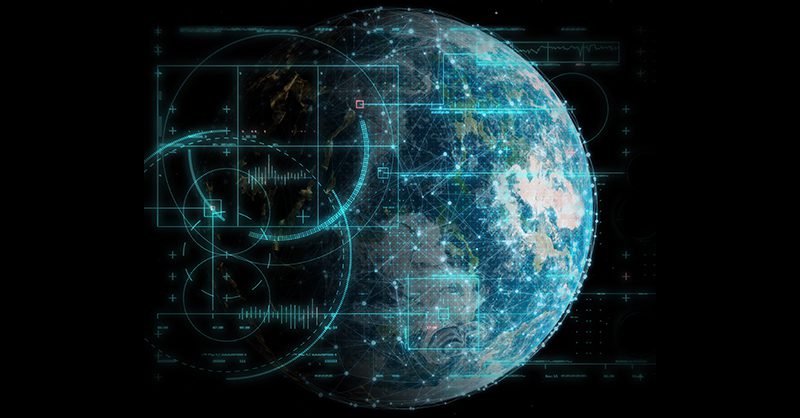June 3rd, 2020
Category: Geospatial Intelligence,Innovation
No Comments
Posted by: Team TA

A Geographic Information System (GIS) could be a framework for gathering, managing, and analyzing data. Rooted within the science of geography, GIS integrates many varieties of information. It analyzes spatial location and organizes layers of knowledge into visualizations using maps and 3D scenes. With this unique capability, GIS reveals deeper insights into data, like patterns, relationships, and situations—helping users make smarter decisions. That brings us to the question:
How does a GIS work?
- Maps: GIS maps are easily shared and embedded in apps, and accessible by virtually everyone, everywhere.
- Data: GIS integrates many various forms of data layers using spatial location. Most data incorporate a geographic component. GIS data includes imagery, features, and base maps linked to spreadsheets and tables.
- Analysis: Spatial analysis enables you to evaluate suitability and capability, estimate and predict, interpret and understand, and far more, lending new perspectives to your insight and decision-making.
- Apps: GIS apps work virtually everywhere: on your mobile phones, tablets, in web browsers, and desktops.
That does a technical definition of the same. But how is an entity or person benefited by GIS Solutions? Let’s take a look at it in simple terms.
What are the uses of GIS?
- Make maps that communicate, perform analysis, share information, and solve complex problems around the world
- GIS delivers real-time situational awareness.
- Identify problems
- Monitor change
- Manage & reply to events
- Perform forecasting and understand trends
- Use GIS to forecast traffic
- Set priorities
- GIS helps to gain insights and line priorities
GIS brings enormous opportunities for space exploration, urban planning, and retail. With strong GIS-enabled systems, experts can capture and visualize treasured geospatial intelligence. By implementing robust GIS software applications, professionals can capture and visualize valuable geospatial intelligence.
When speaking about the effects and helpfulness of GIS, it’s imperative to discuss more on where they can be applied. The following spaces would be greatly benefited from the introduction of GIS to their folds with some being implemented already while some yet to reach its full potential.
Education: Mapping and spatial analysis enhance learning in schools and aid administrators.
Hospitals & Healthcare: to identify and locate areas where medical help is required and to track pandemics such as the very recent covid19. With smart maps and spatial analysis find the most effective places to locate health facilities. By spatial analysis of potential sites, healthcare personnel can decide the most effective location for a hospital. Create strategies with GIS to boost systems that affect the health of the community.
Insurance: Location influences every decision in insurance risk assessment. It would help financial institutions generate insurance plans based on the severity of risks involved based on geographical history.
Manufacturing: Gauge competitive landscape by spatial analysis. Real-time situational awareness and alerting help to respond to the supplier, product, and customer requirements.
Public Safety: With location intelligence easy to stop and mitigate the effect of complex threats and hazards found in your community.
Real Estate: Maps & spatial analysis give insights into better opportunities.
Retail: Mapping & Analysis helps to understand where customers live, work, and shop. Determine the most effective store locations.
Telecommunication: Location Intelligence helps to identify the reach and usage of telecommunication systems and identify where network issues should be attended.
Transportation: Plan, monitor, and manage strategic infrastructure. Monitor assets in real-time, optimize routes, and improve communication. Improves management, safety & security, and regulatory compliance.
Government: Making data-driven decisions that improve quality of life is crucial for any national, state, or local government.
Water: GIS insights lead to better water management. Optimize and manage a sustainable water system and many more.
The world is expecting some revolutionary changes with wider adoption and enablement of GIS solutions.
Open-source GIS mapping provides endless possibilities for collecting and visualizing spatial information and customizing maps.
- Project the demographics region-wise.
- Identify the provision of natural resources over time.
- Help to grasp how environmental changes affect the renovation of a historical site.
- GIS helps government agencies in getting location data. Enabling AR will increase its usefulness.
Geospatial Analytics provides much-required information and insights that are easier to process and understand.
- Geospatial analytics clarifies complicated relationships and points out ways to streamline the process.
- Make extra knowledgeable selections approximately constructing or increasing centers and stores.
- Tune while gadgets and equipment with the internet of things (IoT) sensors input or go away a work vicinity
- Create apps for retail customers that enrich in-save stories (e.g., retail beacon technology)
- Speed up logistics and decrease charges by way of jogging numerous routing scenarios
- Locate styles of criminal activity within a location
- Decrease risks from unsafe place-based events like effective storms.
Here at TA, we have been working with one of our clients in GIS and Data Science in implementing an Open Data Cube instance for a specific region in the US. We have also been working on an ODC instance on Kerala – analyzing the floods that recently ravaged the Southern Indian state. We will be sharing a new blog next week with a brief on the project, including the techniques we employed through which we made that project reach fruition.
Stay tuned to Team TA…